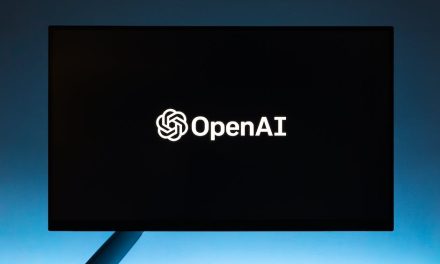Table of Contents
“Unlocking the Power of Connectivity: Embrace IoT for Effective Leadership.”
Introduction
Leaders should embrace the Internet of Things (IoT) due to its potential to revolutionize industries, enhance operational efficiency, and drive innovation. The IoT refers to the network of interconnected devices and objects that collect and exchange data through the internet. By leveraging IoT technologies, leaders can gain valuable insights, make data-driven decisions, and create new business opportunities. This article explores the reasons why leaders should embrace the IoT and highlights its benefits for organizations across various sectors.
Benefits of IoT Adoption for Leadership

The Internet of Things (IoT) has become a buzzword in recent years, and for good reason. This interconnected network of devices and objects has the potential to revolutionize the way we live and work. While many discussions around IoT focus on its impact on industries such as manufacturing and healthcare, its benefits for leadership should not be overlooked.
One of the key benefits of IoT adoption for leadership is the ability to make data-driven decisions. With IoT devices collecting and transmitting vast amounts of data, leaders have access to real-time information that can inform their decision-making process. For example, in a manufacturing setting, IoT sensors can monitor equipment performance and provide insights into maintenance needs. This allows leaders to proactively address issues before they become major problems, reducing downtime and increasing productivity.
In addition to real-time data, IoT also enables leaders to gather historical data for analysis. By analyzing trends and patterns, leaders can identify areas for improvement and make informed decisions to drive organizational growth. For instance, in retail, IoT devices can track customer behavior and preferences, allowing leaders to tailor their marketing strategies and improve customer satisfaction.
Another benefit of IoT adoption for leadership is improved operational efficiency. IoT devices can automate routine tasks, freeing up time for leaders to focus on strategic initiatives. For example, in logistics, IoT sensors can track inventory levels and automatically reorder supplies when they run low. This not only reduces the risk of stockouts but also eliminates the need for manual inventory management, saving time and reducing errors.
Furthermore, IoT can enhance communication and collaboration within organizations. With IoT devices connected to the internet, leaders can easily communicate with employees, regardless of their location. This is particularly valuable in today’s remote work environment, where teams may be spread across different cities or even countries. IoT-enabled communication tools, such as video conferencing and instant messaging, enable leaders to stay connected with their teams and foster collaboration.
IoT also has the potential to improve employee engagement and satisfaction. By leveraging IoT devices, leaders can create a more connected and personalized workplace experience. For example, smart office technologies can adjust lighting and temperature settings based on individual preferences, creating a more comfortable and productive work environment. Additionally, IoT devices can provide employees with real-time feedback on their performance, allowing them to track their progress and make necessary improvements.
Lastly, IoT adoption can lead to cost savings for organizations. By optimizing processes and reducing inefficiencies, leaders can achieve significant cost reductions. For instance, in energy management, IoT sensors can monitor and control energy usage, identifying areas of waste and enabling leaders to implement energy-saving measures. This not only reduces utility bills but also contributes to sustainability efforts.
In conclusion, leaders should embrace the Internet of Things (IoT) for its numerous benefits. From making data-driven decisions to improving operational efficiency and enhancing communication, IoT has the potential to transform leadership practices. By leveraging IoT devices and the wealth of data they provide, leaders can drive organizational growth, improve employee engagement, and achieve cost savings. As IoT continues to evolve, leaders who embrace this technology will be better equipped to navigate the challenges and opportunities of the digital age.
Enhancing Decision-Making with IoT Technology
The Internet of Things (IoT) has become a buzzword in recent years, and for good reason. This technology has the potential to revolutionize the way we live and work, and leaders should be at the forefront of embracing it. One area where IoT can have a significant impact is in enhancing decision-making.
IoT technology allows for the collection and analysis of vast amounts of data from various sources. This data can provide valuable insights that can help leaders make more informed decisions. For example, in manufacturing, IoT sensors can be used to monitor equipment performance and detect potential issues before they become major problems. This data can then be analyzed to identify patterns and trends, allowing leaders to make proactive decisions to improve efficiency and reduce downtime.
In the healthcare industry, IoT devices can be used to monitor patients’ vital signs and collect data on their health conditions. This data can be analyzed in real-time, allowing healthcare providers to make timely decisions about patient care. For example, if a patient’s vital signs indicate a potential health emergency, an alert can be sent to the healthcare provider, enabling them to take immediate action. This can save lives and improve patient outcomes.
IoT technology can also enhance decision-making in the transportation industry. For instance, sensors can be placed on vehicles to collect data on fuel consumption, engine performance, and driver behavior. This data can be analyzed to identify areas for improvement, such as optimizing routes to reduce fuel consumption or providing training to drivers to improve safety. By making data-driven decisions, leaders in the transportation industry can improve efficiency, reduce costs, and enhance customer satisfaction.
Another area where IoT can enhance decision-making is in the retail industry. IoT devices, such as beacons and smart shelves, can be used to collect data on customer behavior and preferences. This data can be analyzed to personalize the shopping experience, such as sending targeted promotions to customers based on their past purchases or preferences. By understanding their customers better, leaders in the retail industry can make more effective marketing and merchandising decisions, ultimately driving sales and customer loyalty.
However, embracing IoT technology is not without its challenges. One of the main concerns is data security and privacy. With the vast amount of data being collected and transmitted, there is a risk of unauthorized access or misuse. Leaders must ensure that appropriate security measures are in place to protect sensitive data and comply with privacy regulations.
Another challenge is the complexity of integrating IoT devices and systems into existing infrastructure. This requires careful planning and coordination to ensure a seamless integration and minimize disruptions. Leaders must also invest in training and education to ensure that employees have the necessary skills to effectively use and interpret the data collected from IoT devices.
In conclusion, embracing IoT technology can greatly enhance decision-making in various industries. By leveraging the power of data collected from IoT devices, leaders can make more informed decisions that drive efficiency, improve customer satisfaction, and ultimately, achieve business success. However, it is important for leaders to address the challenges associated with IoT, such as data security and integration, to fully realize the benefits of this technology. With the right approach, leaders can position their organizations at the forefront of the IoT revolution and gain a competitive advantage in the digital age.
IoT’s Role in Streamlining Operations for Leaders
The Internet of Things (IoT) has become a buzzword in recent years, and for good reason. This interconnected network of devices and sensors has the potential to revolutionize the way businesses operate. For leaders, embracing the IoT can lead to significant improvements in efficiency, productivity, and cost savings.
One of the key benefits of the IoT for leaders is its ability to streamline operations. By connecting various devices and systems, leaders can gain real-time insights into their operations and make data-driven decisions. For example, in manufacturing, IoT sensors can be used to monitor equipment performance and detect potential issues before they become major problems. This proactive approach can help leaders avoid costly downtime and improve overall productivity.
In addition to monitoring equipment, the IoT can also be used to optimize supply chain management. By tracking the movement of goods and materials in real-time, leaders can identify bottlenecks and inefficiencies in their supply chain and take corrective action. This can lead to faster delivery times, reduced inventory costs, and improved customer satisfaction.
Furthermore, the IoT can enable leaders to automate routine tasks and processes, freeing up valuable time and resources. For example, in retail, IoT devices can be used to automatically reorder inventory when stock levels are low. This not only ensures that shelves are always well-stocked but also eliminates the need for manual inventory management, allowing employees to focus on more strategic tasks.
Another area where the IoT can have a significant impact is in energy management. By connecting devices such as lighting, heating, and cooling systems to a central network, leaders can gain better control over their energy usage. For example, sensors can be used to automatically adjust lighting levels based on occupancy, reducing energy waste. This not only helps to reduce costs but also contributes to sustainability efforts.
Furthermore, the IoT can enable leaders to gain a deeper understanding of their customers and their preferences. By collecting and analyzing data from various sources, such as social media, online reviews, and customer feedback, leaders can gain valuable insights into customer behavior and preferences. This information can then be used to personalize marketing campaigns, improve product offerings, and enhance the overall customer experience.
However, it is important for leaders to recognize that embracing the IoT also comes with challenges. Security and privacy concerns are among the top concerns when it comes to IoT implementation. With more devices connected to the network, the potential for cyberattacks and data breaches increases. Therefore, leaders must invest in robust security measures and ensure that data is encrypted and protected.
In conclusion, the IoT has the potential to revolutionize the way businesses operate, and leaders should embrace this technology to streamline their operations. By connecting devices and systems, leaders can gain real-time insights, automate routine tasks, optimize supply chain management, and improve energy efficiency. However, it is important to address security and privacy concerns to ensure the successful implementation of the IoT. With careful planning and investment, leaders can harness the power of the IoT to drive efficiency, productivity, and cost savings in their organizations.
Leveraging IoT for Improved Customer Experience
The Internet of Things (IoT) has become a buzzword in recent years, and for good reason. This interconnected network of devices and sensors has the potential to revolutionize the way we live and work. While many industries have already started to embrace the IoT, there is one area where its impact can be particularly significant: customer experience.
In today’s digital age, customers have come to expect personalized and seamless experiences across all touchpoints. They want products and services that are tailored to their specific needs and delivered in a timely manner. This is where the IoT can play a crucial role. By leveraging the power of connected devices, businesses can gather real-time data about their customers and use it to enhance their experience.
One way in which the IoT can improve customer experience is through predictive maintenance. By equipping their products with sensors, companies can monitor their performance in real-time and detect any potential issues before they become major problems. This not only helps to prevent downtime but also allows businesses to proactively address customer concerns. For example, a manufacturer of industrial machinery can use IoT-enabled sensors to monitor the health of their equipment and schedule maintenance or repairs before a breakdown occurs. This ensures that their customers can continue to operate smoothly without any disruptions.
Another area where the IoT can make a significant impact is in the retail industry. By connecting physical stores with online platforms, businesses can create a seamless shopping experience for their customers. For instance, a customer browsing through a clothing store can use their smartphone to scan a QR code on a garment and instantly access detailed product information, customer reviews, and even make a purchase. This not only enhances the customer’s shopping experience but also provides valuable data to the retailer, allowing them to better understand their customers’ preferences and tailor their offerings accordingly.
Furthermore, the IoT can enable businesses to offer personalized recommendations and suggestions to their customers. By analyzing data from various sources, such as social media, browsing history, and purchase behavior, companies can gain insights into their customers’ preferences and make targeted recommendations. For example, a streaming service can use the IoT to analyze a user’s viewing habits and suggest new shows or movies that they might enjoy. This not only enhances the customer’s experience but also increases engagement and loyalty.
In addition to improving customer experience, the IoT can also help businesses streamline their operations and reduce costs. By connecting various devices and systems, companies can automate processes and eliminate manual tasks. For example, a logistics company can use IoT-enabled sensors to track the location and condition of their shipments in real-time, allowing them to optimize routes, reduce delivery times, and minimize the risk of damage or loss. This not only improves efficiency but also ensures that customers receive their orders in a timely manner.
In conclusion, the Internet of Things has the potential to revolutionize customer experience. By leveraging the power of connected devices and real-time data, businesses can personalize their offerings, provide seamless shopping experiences, and offer targeted recommendations. Furthermore, the IoT can help streamline operations and reduce costs, ultimately benefiting both businesses and customers. As the IoT continues to evolve, leaders should embrace this technology and explore its potential to enhance customer experience.
Q&A
1. What is the Internet of Things (IoT)?
The Internet of Things (IoT) refers to the network of physical devices, vehicles, appliances, and other objects embedded with sensors, software, and connectivity, enabling them to collect and exchange data.
2. How can leaders benefit from embracing the Internet of Things (IoT)?
Leaders can benefit from embracing the IoT by gaining access to real-time data, improving operational efficiency, enhancing decision-making processes, and enabling new business models and revenue streams.
3. What are some specific advantages of leaders embracing the IoT?
Specific advantages of leaders embracing the IoT include increased productivity, cost savings through predictive maintenance, improved customer experiences, enhanced safety and security measures, and the ability to innovate and stay competitive in the digital age.
4. Are there any challenges that leaders may face when embracing the IoT?
Yes, leaders may face challenges such as data security and privacy concerns, interoperability issues, the need for skilled talent to manage IoT systems, and the potential for disruption to existing business models.
Conclusion
In conclusion, leaders should embrace the Internet of Things (IoT) due to its potential to enhance operational efficiency, improve decision-making processes, enable data-driven insights, and drive innovation. By leveraging IoT technologies, leaders can gain a competitive advantage, optimize resource utilization, and deliver enhanced customer experiences. Embracing IoT can also lead to cost savings, increased productivity, and the ability to adapt to changing market dynamics. Overall, leaders who embrace IoT can position their organizations for success in the digital era.




